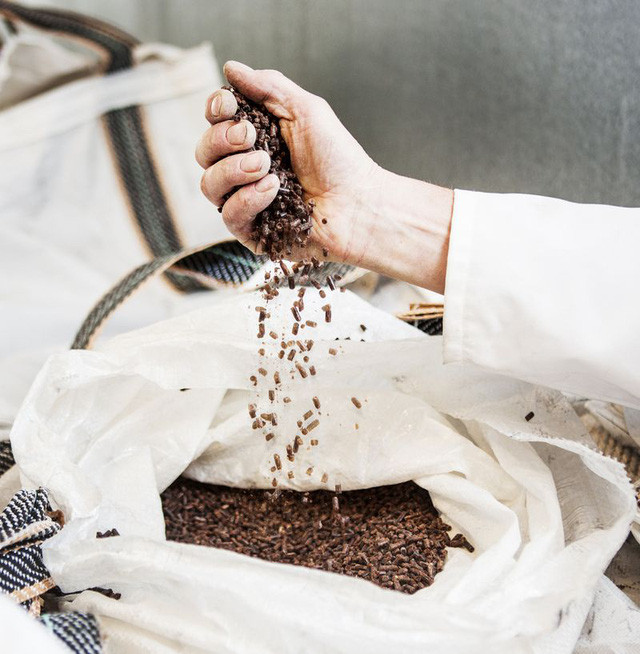Delicious food made from ... garbage
The delicious food produced from garbage is no longer a fiction thanks to new research by scientists of biochemical technology company Calysta (USA) and String Bio (India).
According to Bloomberg, the two companies' companies hope to produce food for people from waste.

The protein produced from methane rises from landfills - (Photo: Bloomberg).
The core of this waste-to-feed conversion technology lies in the process of converting methane into landfills into nitrogen.
The yeast bacteria living in the soil are provided with a solution containing methane to promote fermentation. Instead of becoming alcohol, this fermentation process produces a protein solution. Scientists will then dry the solution into powder.
This initial product was tested as feed for livestock and obtained satisfactory results.
However, this is only the first step. Researchers hope to use this technology to solve the food problem in the context of a rapidly growing population.

Alan Shaw next to Calysta's production line - (Photo: Bloomberg).
Alan Shaw, executive director of Calysta and an experienced researcher who turns waste from crops into fuel, says the idea of turning waste into food is much better than finding ways to destroy it, and Their new solution will "solve a huge pressure" of humanity.
Landfills, garbage disposal areas and farms are all places that produce significant amounts of methane. The amount of gas collected from these places is not enough to optimize production. Therefore, Alan said his team is trying to shrink the scale of the technology.
This project is expected to be completed within the next 5 years. Until then, Calysta temporarily used natural gas instead.
The company received $ 40 million in funding to start producing 200,000 tons of nitrogen in 2019.

Ezhil Subbian and her colleagues at String Bio still maintain their tests on a small scale - (Photo: Bloomberg).
Meanwhile, String Bio is still seeking funding for itself and still maintains drip production at a factory in Bengaluru (India). The final product was sent to local poultry farms and fish farmers for testing.
Ms. Ezhil Subbian, a scientist who participated in the study of String Bio, explains: "You just need to mix this protein mixture with normal feed. However, we are aiming to turn them into food for human".
This product has a taste similar to whey and has no odor. The team is currently looking to create a taste for this new protein to stimulate the taste of the eater.
"We want to sell our products in the form of beef, fish or tofu so people can prepare them - she said - At that time, we will recruit a chef to the team."
- Tips for choosing delicious dry food
- Balance food to be delicious and healthy
- Video: How the dinner changed over the last 100 years
- The secret to choosing clean food on Tet
- Food ... on Shenzhou 6
- Food is delicious on shipwreck 2,000 years
- The giant Pacific Island trash island will be cleared with this wonderful system
- Plastic made from food: Is it a good idea?
- Household items made from food waste of Japanese designers
- How to choose delicious meats to ensure food safety
- How to preserve Tet food is long
- 6 delicious dishes but easy to cause poisoning
 Green tea cleans teeth better than mouthwash?
Green tea cleans teeth better than mouthwash? Death kiss: This is why you should not let anyone kiss your baby's lips
Death kiss: This is why you should not let anyone kiss your baby's lips What is salmonellosis?
What is salmonellosis? Caution should be exercised when using aloe vera through eating and drinking
Caution should be exercised when using aloe vera through eating and drinking Besides humans, what animal has basically no natural enemies?
Besides humans, what animal has basically no natural enemies?  Absolutely do not buy food wrapped in this stuff because it is toxic and just as harmful as plastic bags.
Absolutely do not buy food wrapped in this stuff because it is toxic and just as harmful as plastic bags.  How big can the human stomach expand?
How big can the human stomach expand?  Is it necessary to heat canned meat and fish before eating to prevent Botulinum poisoning?
Is it necessary to heat canned meat and fish before eating to prevent Botulinum poisoning?  Is it harmful to eat 'buried pork' buried underground for 2-3 years?
Is it harmful to eat 'buried pork' buried underground for 2-3 years?  What if we raised dinosaurs for food?
What if we raised dinosaurs for food? 